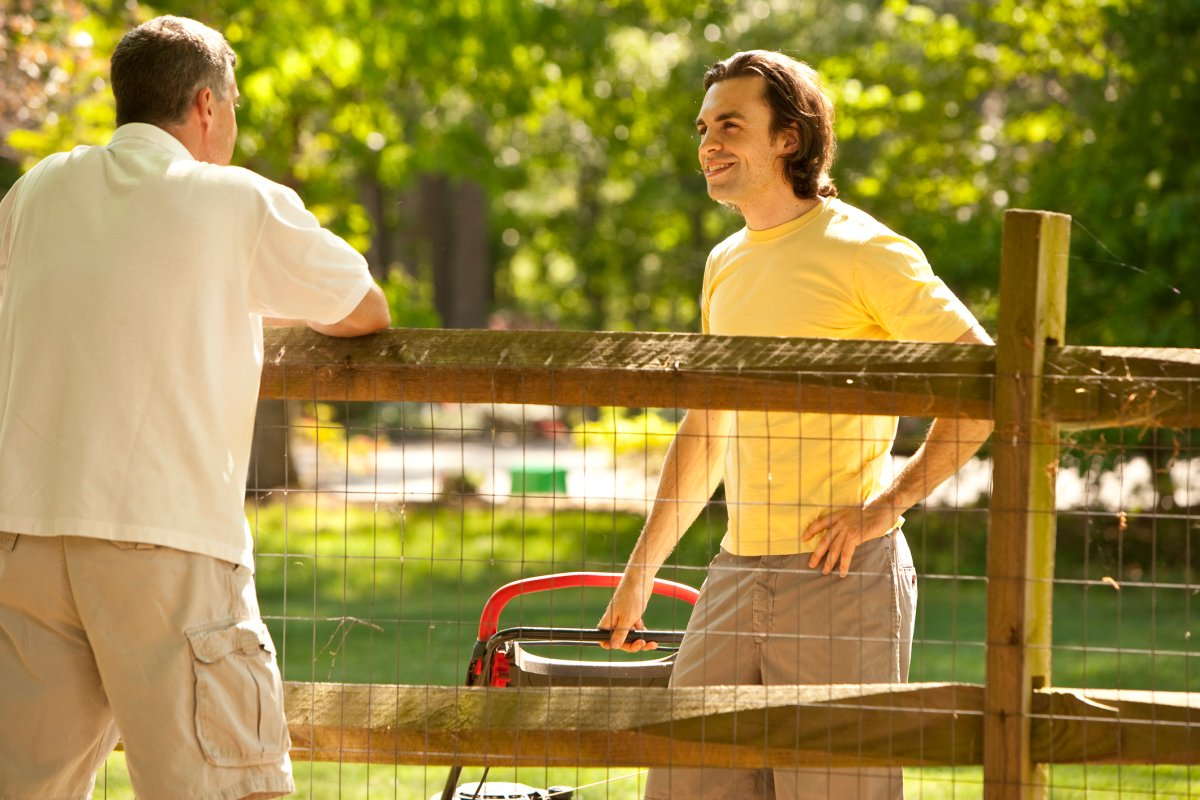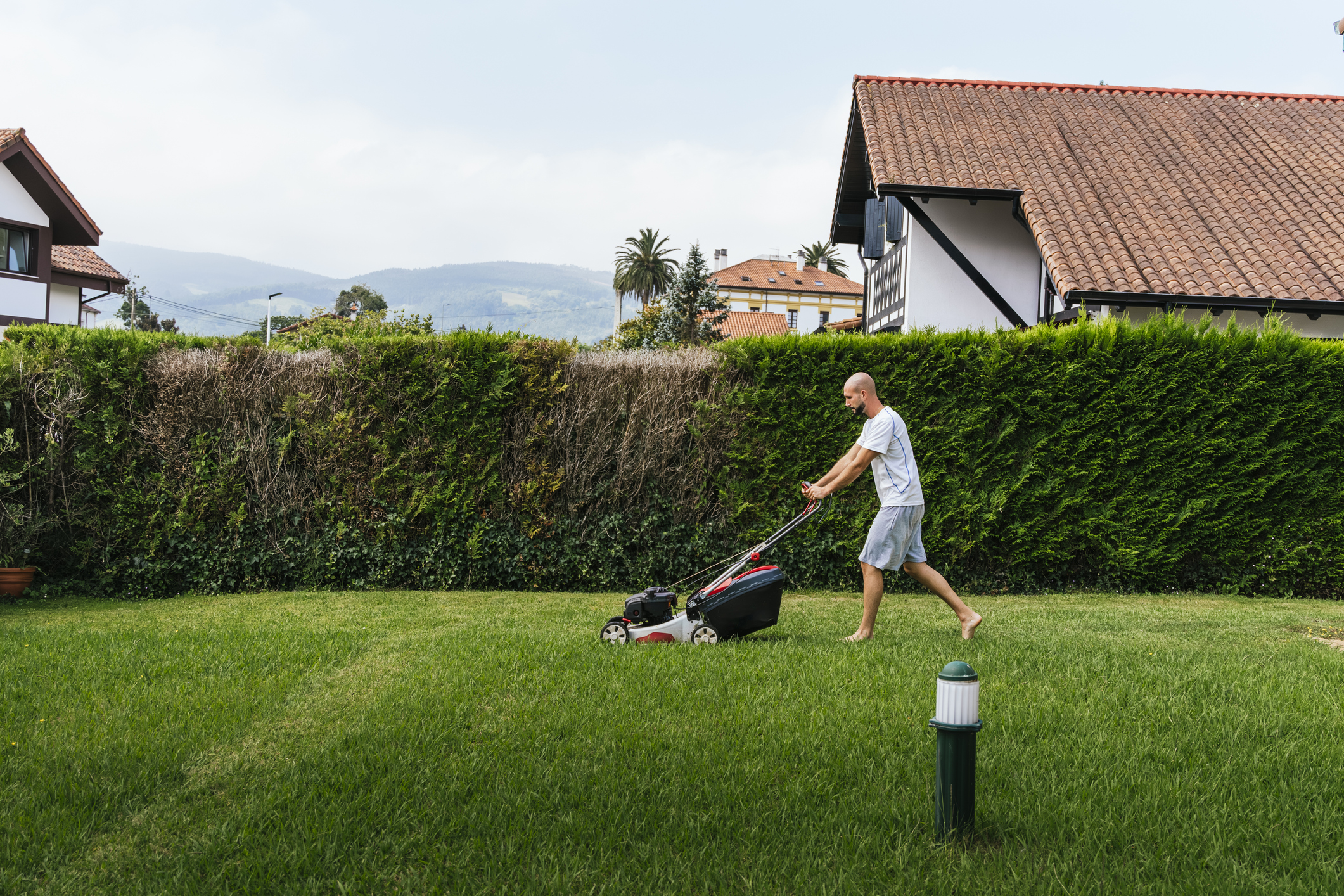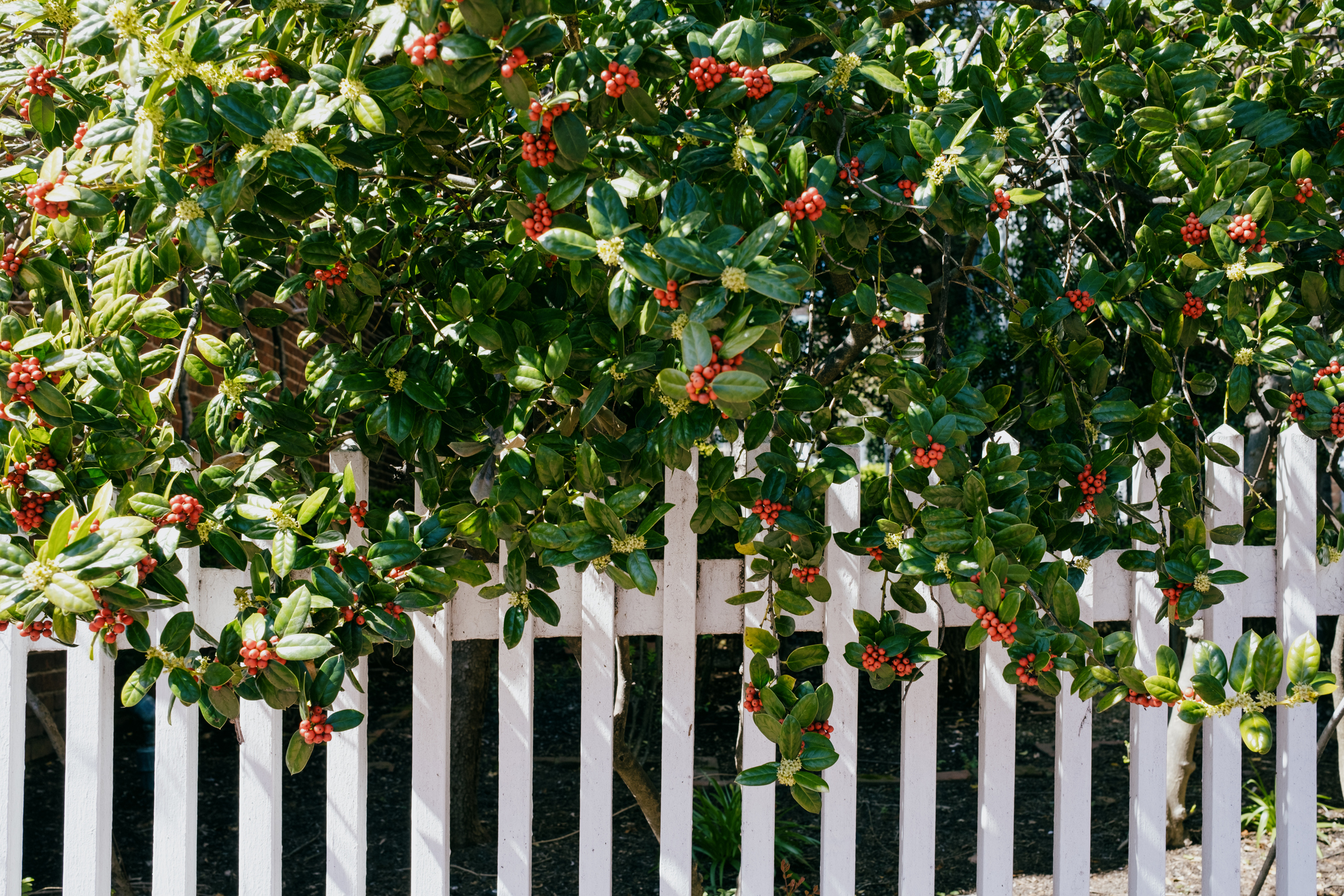

We may earn revenue from the products available on this page and participate in affiliate programs. Learn More ›
Have you ever been shaken out of bed early on a Saturday morning to discover your neighbors are mowing their lawn or running their leaf blower? When you look at the clock, you notice the time and become irate that they would be starting yardwork when the rest of the neighborhood is most likely still asleep.
Nothing good can come of this behavior—dirty looks, shouting matches, and ruined relationships on the block—so don’t be that kind of neighbor. Sometimes yardwork disputes can even lead to legal action, so be aware of a few common courtesies that often get ignored when it comes to yardwork. If you want to keep peace on your street, be sure to stick to the best yardwork etiquette possible.
1. Don’t Use Loud Equipment Too Early or Too Late in the Day
Make sure to check with your local jurisdiction or HOA about any rules designating quiet hours. Even if using loud equipment early in the morning or in the evening is legally okay where you live, it’s still socially tone deaf, says Karen Watts, founder and CEO of DomiSource and a real estate expert who manages several properties in Virginia Beach, Virginia.
“I recommend waiting until 8 a.m. on weekdays and 9 a.m. on weekends. It’s especially important to be quiet in neighborhoods with babies, shift workers, or retirees,” advises Watts. In addition, the general consensus for when to stop yardwork is at 6 p.m., so as not to disturb neighbors’ dinnertime and the rest of their evening downtime at home.
2. Never Neglect General Landscaping Maintenance
Overgrown lawns and plants start to bring the entire neighborhood down. The neglect ruins curb appeal and irritates others, plus it can impact neighbors’ properties as well. “Far from simple aesthetics, I have seen overgrown properties introduce pests into neighboring lawns and landscaping—everything from ticks and fleas in areas prone to them, to mosquitoes and more,” says David Joles, COO of PURCOR Pest Solutions.
“To avoid bothering your neighbors, you should keep a general standard of cleanliness and neatness to your landscaping, including pest control where necessary, weeding, and keeping everything trimmed,” Joles says. General landscaping maintenance includes mowing your lawn regularly, ideally every 1 to 2 weeks.

3. Don’t Blow Grass Clippings Onto the Street or Into a Neighbor’s Yard
Another no-no is making a mess of your neighbor’s yard, such as blowing clippings into the street or into other people’s yards. “Not only is this unsightly, it’s also dangerous since wet clippings are slippery,” warns Watts. “Always blow clippings inwards (not out into the street) and pick up the clippings after each pass.” It’s also important to properly rake and bag any clippings to keep them contained and to go the extra mile to regularly check and clean up any stray clippings laying on sidewalks and in shared spaces bordering your property.
4. Keep Trees Properly Maintained
It’s also important to maintain your trees with the proper lawn and garden tools, especially if you live in an area prone to heavy winds and strong storms like hurricanes. “In the event of a major storm, branches, fronds, coconuts, and other debris can cause you and your neighbors major property damage,” warns Morgan Mongelia, owner of Berger’s Property Maintenance Company, which handles lawn and landscaping services in Miami, Florida.
Mongelia recommends pruning trees at least twice per year. “These services will eliminate dead and dying branches, remove excess fronds and seed pods, and contribute to the tree’s overall health,” she explains. If you neglect to keep your trees cut back, you risk facing legal action from your neighbor.
5. Stay On Top of Weeds
Letting your weeds take over your yard is another sign of poor etiquette. “Besides the fact that weeds don’t look attractive and can force your neighbors to constantly look at an unkempt yard, weeds can spread easily,” says Steve Corcoran, CEO of Lawn Love. “Dandelions, for example, spread via the wind dispersing their seeds, so leaving them unmanaged in your yard means their seeds can travel over into your neighbors’ yards and force them to have to work extra hard to remove those weeds from their yards.” That can even end up being a financial burden for them, which isn’t a very neighborly thing to do.

6. Don’t Allow Plants and Trees to Grow Over Property Lines
Know your property lines to avoid a conflict with your neighbors, and be sure to keep your vegetation on your side. This means keeping shrubs and tree limbs trimmed to ensure they don’t overhang into your next-door neighbor’s space, which can cause problems like interfering with power lines. Also, if your lawn meets your neighbor’s lawn, only cut the grass up to your side of the property line.
7. Never Plant Harmful Invasives
Finally, another way to drive your neighbors nuts is to plant invasives in your yard that end up taking over their yard as well. Super-spreading invasive plants can quickly crowd out native vegetation and become a nuisance, while also threatening the environment, animals, insects, and people. They can even cause expensive, large-scale problems, such as damaging structures. Some common invasive plants to avoid planting in your yard include kudzu, bamboo, English ivy, Japanese barberry, and Japanese honeysuckle.
“It’s always best to plant material that is native to your region,” suggests Mongelia. “The use of native material invites nature into your yard and creates an ecosystem for insects and animals to thrive. Plus, they are usually able to withstand the natural shifts of the seasons, providing you with a lush landscape all year long.”
